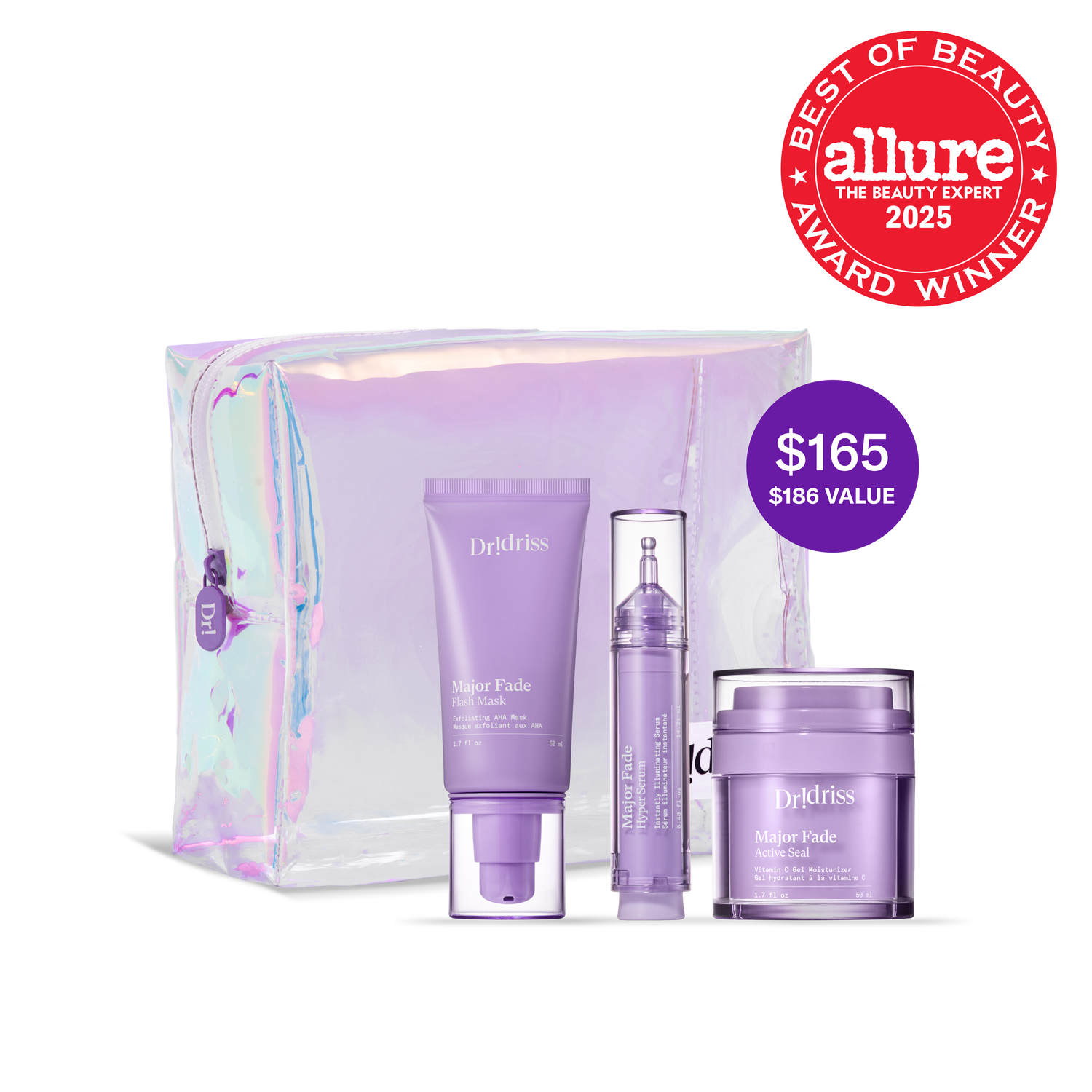
Glycolic acid, Lactic acid, Mandelic acid, Salicylic acid, Gluconolactone — I know...you’re probably thinking what in the medical school jargon is all of this!? Well, for the skincare newbies reading this, these are examples of exfoliating acids. You may also hear them referred to as AHAs, BHAs, and PHAs, but aren’t necessarily well versed in their differences and the distinct skin perks they have to offer when used correctly. So, calling all acid rookies! Read on for my comprehensive guide on all things AHA, BHA, and PHA.
What to know before using exfoliating acids 
Before we take a deep dive into chemical exfoliants, I must begin with some cautionary advice. In the last year or so, we've seen the popularity of exfoliating acids skyrocket, which is great cause they truly were the underdogs of the skincare world. However, the lack of education on these ingredients has resulted in many people falling victim to acid-related skin troubles. At this point, I've honestly lost count of the number of patients I’ve seen whose skin barriers have been completely stripped due to the misuse of acids.
The key to acid success is to incorporate them into your routines weekly and not daily. Over-exfoliating is not cute and will result in total skin sabotage. The outcome will be a skin barrier that's left inflamed, prone to breakouts, and overall, will induce prolonged oxidative stress that will catalyze premature skin aging. So as I’ve said before and will say, again and again, less is more with these babies!
What are exfoliating acids, and what do they do?
Exfoliating acids help shed dead skin cells on the superficial layer of your skin. They achieve this by breaking the bonds holding these cells together and release them to reveal a fresher, smoother, and brighter base. By clearing up all of this dead skin cell build-up, they end up helping your other skincare products work better for you. On top of this, some of these acids can also rev up collagen production — so they come along with a multitude of benefits.
When should you use exfoliating acids?
Always exfoliate at night, right after cleansing, and always follow this up with sunscreen in the morning. This is a non-negotiable step as exfoliating acids increase the skin’s sun sensitivity. So when you're ready to make your first exfoliating acid product purchase, always remember that chemical exfoliants and sun protection go hand in hand.
The different categories of exfoliating acids
1. Alpha Hydroxy Acids (AHAs)
In this group are three kinds of acids that differ according to molecule size. The smallest is glycolic acid. What does glycolic acid do, do you ask? It can penetrate the deepest and helps boost collagen production in the process. But approach with caution if you’re on the more sensitive side, as it can cause irritation due to its level of skin penetration. But overall, this form of acid offers amazing anti-aging properties to smoothen and retexturize skin.
For pigmentation troubles, lactic acid is a worthy choice. On the size scale, it comes second place as it penetrates more superficially (i.e. on the top layer of the skin) and is typically used to brighten skin and diminish dark spots, age spots, and dullness.
Last but not least is mandelic acid — this is the largest of the three and a good starting point for the most sensitive of sensitive skin as it doesn’t penetrate that deeply. Mandelic acid is also oil-soluble (compared to the former two, which are water-soluble), so if you’re both oily and sensitive, this gem is for you.
2. Beta Hydroxy Acids (BHAs)
These are oil-soluble acids, so if you have oily and acne-prone skin, BHAs are your next fave besties. The most popular, salicylic acid is derived from willow bark and offers anti-inflammatory effects in addition to its ability to treat acne and decelerate oil production.
3. Poly Hydroxy Acids (PHAs)
PHAs are the cousins of AHAs so for all the sensitive souls out there, they’re a superb alternative if you want to try another type of acid. In this group is gluconolactone acid, a humectant that also helps neutralize free radicals, making it a staple for winter skin as it retains moisture and protects.
Lactobionic acid is another form of PHA that is a go-to for large pores and pigmentation. It provides clarifying, plumping, and smoothing effects while also increasing hydration in the skin. With regular use, expect improved skin elasticity, thickness, and faded dark marks and scars.
Maltobionic acid is the largest of the bunch, which means it’s the gentlest and geared to those with super-sensitive skin. So if you’re a newbie who wants to take a dip in the acid pool, this is a perfect place to start.
Now that you're clued up on AHAs, BHAs, and PHAs, you can shop Major Fade Flash Mask and my other splurge worthy acid buys here: https://shopmyshelf.us/collections/23674


















